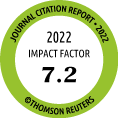Return to content in this issue
Regulatory T and B Cells in Asthmatic Women: Variations From Pregnancy to Postpartum
Martins C1, Lima J1,2, Nunes G1, Borrego LM1,3
1CEDOC, Chronic Diseases Research Center, NOVA Medical School|FCM; Universidade Nova de Lisboa, Lisbon, Portugal
2Ginecologia e Obstetrícia, Hospital CUF Descobertas, Lisbon, Portugal
3Imunoalergologia, Hospital CUF Descobertas, Lisbon, Portugal
J Investig Allergol Clin Immunol 2017; Vol 27(1)
: 46-57
doi: 10.18176/jiaci.0086
Background and Objectives: Allergic asthma and rhinitis are common in pregnancy. The immune mechanisms underlying the effects of asthma on pregnancy and vice versa are not completely understood. The aim of this study was to investigate changes in regulatory T and B cells in asthmatic women from late pregnancy to postpartum.
Methods: Four groups of women were enrolled for this study: asthmatic (n=23) and healthy (n=43) third trimester–pregnant women and asthmatic (n=33) and healthy (n=35) nonpregnant women. Pregnant women were also evaluated postpartum (>6 weeks after delivery). Blood samples were taken from each woman and flow cytometry was used to characterize circulating regulatory T cells (Tregs) and regulatory B cells (Bregs). Foxp3 expression was assessed in CD4DimCD25Hi Tregs.
Results: Tregs did not vary significantly from pregnancy to postpartum in asthmatic or healthy women, but CD24HiCD38Hi Bregs decreased in pregnancy and increased significantly postpartum. Foxp3 expression in Tregs was also impaired during pregnancy in both asthmatic and healthy women, but recovered postpartum. Asthmatic pregnant women had higher Foxp3 expression levels than healthy pregnant women (P=.007), probably due to the use of control medication.
Conclusions: Women with controlled asthma showed variations in regulatory cell subsets during pregnancy and postpartum. A similar pattern was observed for Foxp3 expression and CD24HiCD38Hi Bregs during this period, corroborating the interaction between Tregs and Bregs in immune responses. Considering the immunomodulatory potential of these immune mediators, more studies are needed to evaluate their relationship with asthma and rhinitis complications in pregnancy.
Key words: Atopy, Gestation, Postpartum, Regulatory T-Cells, Regulatory B-Cells, Humans, Flow cytometry



